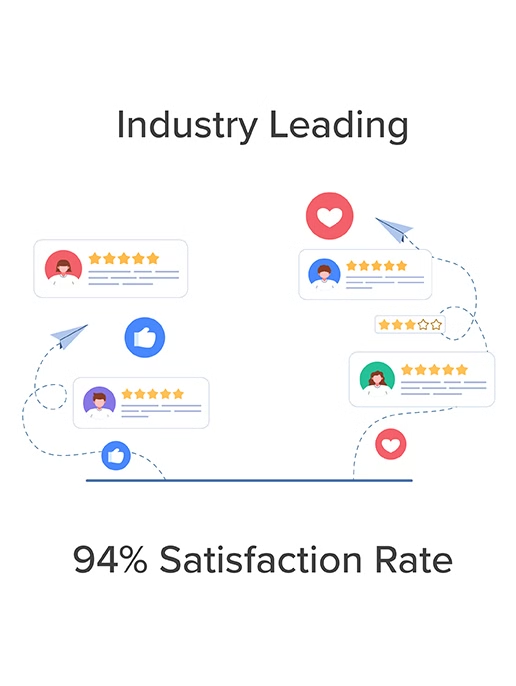
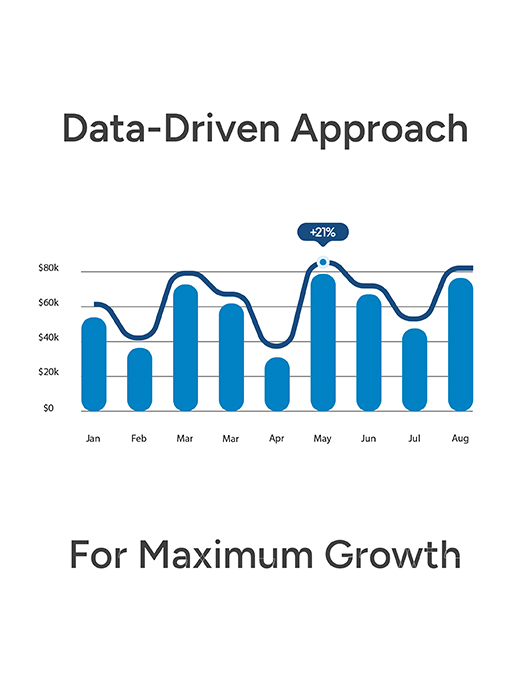
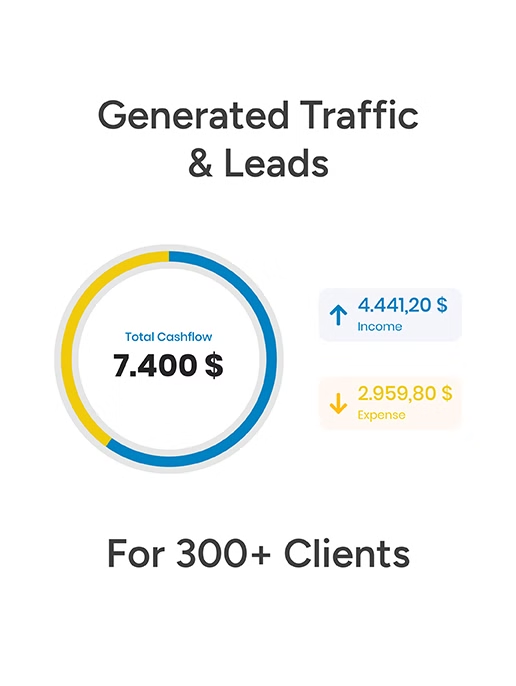
A professional law firm website built by an experienced web development agency can cost anywhere from $4,000 to $10,000—or more, depending on your firm’s size and practice areas.
For many lawyers and small firms, this creates a significant budget challenge that can limit their ability to market their services and attract new clients effectively.
That’s why we offer specialized law firm website packages, designed to help attorneys establish a strong online presence without the heavy upfront investment. Get started with a free starter website, then upgrade as your practice grows.
With our comprehensive website packages, we handle all the technical details, so you can remain focused on what you do best—serving your clients and practicing law.
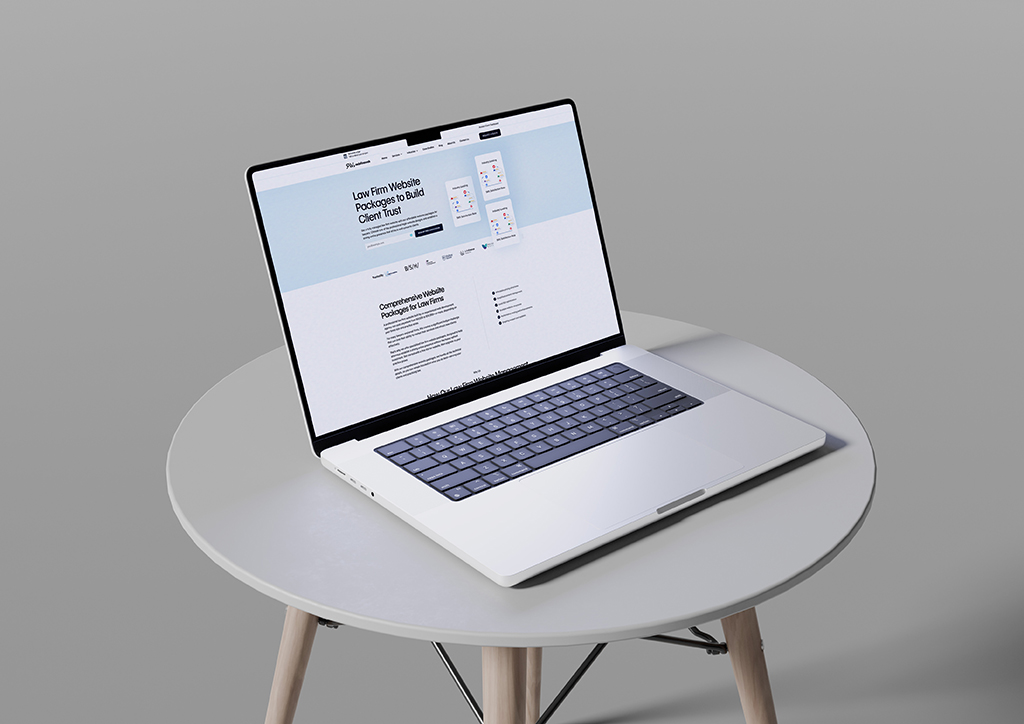
A professional website is essential for any law firm looking to build trust and attract new clients. However, even the most user-friendly website builders can take significant time and still fall short of delivering the professional image your firm deserves.
At Redefine Web, we provide all-inclusive website development solutions specifically tailored for lawyers and law firms. From design and development to SEO and digital marketing, we handle every detail to help your firm establish a strong online presence.
We collaborate closely with you to understand your practice areas, target clients, and unique goals. This comprehensive approach ensures your website reflects your firm’s expertise, enhances credibility, and helps you stand out in a competitive legal market.
Many attorneys and law firm owners feel frustrated by the limited, costly options available for creating professional law firm websites. Too often, these services come with hidden fees and steep price increases after the initial contract period.
Instead of spending countless hours comparing website builders and templates that don’t meet your firm’s standards, partner with our skilled law firm website designers to create a polished, professional website that represents your practice and attracts the right clients.
Every site we build is designed for long-term growth. Want to add a new attorney bio, practice area page, or client portal down the line? Just reach out — we’ll make it happen smoothly and efficiently.
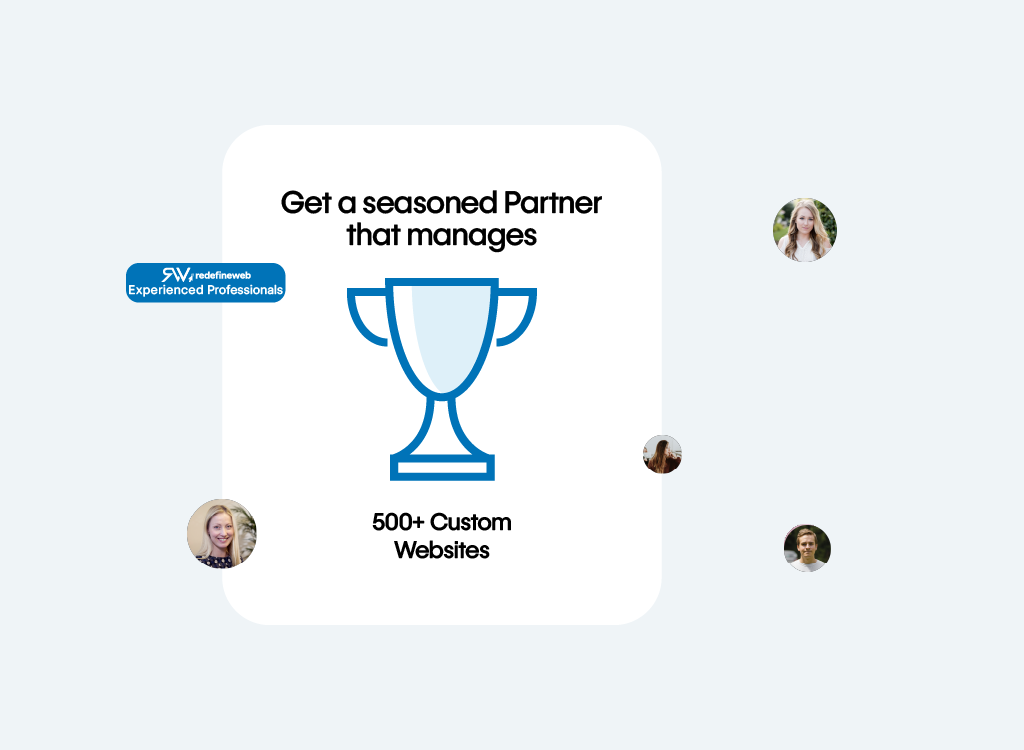
| Feature | Essential | Growth | Business | Custom |
|---|---|---|---|---|
| Design/Retainer Hours | 5 Hours (One-time) | |||
| Security Patches | ✓ | ✓ | ✓ | ✓ |
| Full-site backup | Monthly | Weekly | Weekly | ✓ |
| Security Scan | Monthly | Weekly | Weekly | ✓ |
| Server Migration | ✓ | ✓ | ✓ | ✓ |
| Copywriting | ✓ | ✓ | ✓ | ✓ |
| Keyword Research | ✓ | ✓ | ✓ | ✓ |
| Blog Posts | ✓ | 1 | 1 | 1 |
| Text Updates | ✓ | ✓ | ✓ | ✓ |
| On-page SEO | ✓ | ✓ | ✓ | ✓ |
| Photos Update | ✓ | ✓ | ✓ | ✓ |
| Off-page SEO |
| Feature | Essential | Growth | Business | Custom |
|---|---|---|---|---|
| Server Side Caching | ✓ | ✓ | ✓ | ✓ |
| HTTP Protocol | ✓ | ✓ | ✓ | ✓ |
| OpCache | ✓ | ✓ | ✓ | ✓ |
| Mod_Expires | ✓ | ✓ | ✓ | ✓ |
| Browser Cache | ✓ | ✓ | ✓ | ✓ |
| Brotli Compression | ✓ | ✓ | ✓ | ✓ |
| CDN | 82 POPs | 82 POPs | 82 POPs | 82 POPs |
| Feature | Essential | Growth | Business | Custom |
| Email Forwarders | ✓ | ✓ | ✓ | ✓ |
| Catch-all Emails | ✓ | ✓ | ✓ | ✓ |
| Email Aliases | ✓ | ✓ | ✓ | ✓ |
| IMAP/POP3/SMTP | ✓ | ✓ | ✓ | ✓ |
| Autoresponders | ✓ | ✓ | ✓ | ✓ |
| Filters | ✓ | ✓ | ✓ | ✓ |
| MX/SPF/DKIM Records | ✓ | ✓ | ✓ | ✓ |
| Email Virus Scanner | ✓ | ✓ | ✓ | ✓ |
| Feature | Essential | Growth | Business | Custom |
|---|---|---|---|---|
| Design/Retainer Hours | 5 Hours (One-time) | |||
| Security Patches | ✓ | ✓ | ✓ | ✓ |
| Full-site backup | Monthly | Weekly | Weekly | ✓ |
| Security Scan | Monthly | Weekly | Weekly | ✓ |
| Server Migration | ✓ | ✓ | ✓ | ✓ |
| Copywriting | ✓ | ✓ | ✓ | ✓ |
| Keyword Research | ✓ | ✓ | ✓ | ✓ |
| Blog Posts | ✓ | 1 | 1 | 1 |
| Text Updates | ✓ | ✓ | ✓ | ✓ |
| On-page SEO | ✓ | ✓ | ✓ | ✓ |
| Photos Update | ✓ | ✓ | ✓ | ✓ |
| Off-page SEO |
We often send out our newsletter with news and great offers. We will never disclose your data to third parties and you can unsubscribe from the newsletter at any time.
Unfortunately, we’re unable to offer free samples. As a retailer, we buy all magazines from their publishers at the regular trade price. However, you could contact the magazine’s publisher directly to ask if they can send you a free copy.
You can create a new account at the end of the order process or on the following page. You can view all of your orders and subscriptions in your customer account. You can also change your addresses and your password.
No, you don’t have to create an account. But there are a few advantages if you create an account.
You never have to enter your billing and shipping address again
Find all of your orders, subscriptions and addresses in your account
Download invoices of your orders
No, we don’t have a physical store location at the moment. We accept only orders through our online shop and we’re shipping all orders with the Swiss Post Service. Please visit our shipping section for more details.
From time to time you will find us at design fairs and popup markets in Switzerland. Subscribe to our newsletter and you’ll receive the latest news.
To ensure fast, reliable performance for all clients, we maintain a soft traffic limit that easily supports the needs of most law firms. If your site begins attracting higher traffic—a strong sign your marketing is paying off—we’ll help you smoothly upgrade to a plan with more capacity, faster speeds, and advanced tools so your growth never slows down.
Each paid plan includes domain-based email addresses (e.g., info@yourfirm.com, intake@yourfirm.com), giving your communication a professional, trustworthy image. Dedicated inboxes for client inquiries, billing, and case coordination help your team stay organized and project credibility to every client.
Your package includes dedicated design hours for customizing your firm’s website. During this time, our designers personalize your chosen template to reflect your brand identity, legal specialties, and client focus — from colors and layout to imagery and messaging. Need extra customization, such as attorney profiles or detailed practice area pages? Additional design hours can be added easily.
Our design team uses these hours to create a site that looks professional, aligns with your branding, and builds trust with potential clients. We personalize structure, colors, and visuals to create a cohesive, authoritative presence. These hours lay the groundwork for your firm’s website, with flexibility to expand or update as your practice grows.
Yes. If you prefer to own your law firm website outright and manage hosting independently, our buyout option gives you complete ownership. We’ll provide all design files, assets, and detailed guidance for a smooth transition—allowing your firm to maintain full control over your online presence.
Most law firm websites are completed within 30 days, depending on how quickly we receive your content, images, and brand materials. Advanced projects—like sites with client portals, document upload integrations, or marketing add-ons—may take a bit longer. You’ll always receive a clear timeline before we begin.
Yes, we’ll need your firm’s bios, practice area details, and photos. However, if you’d rather leave it to us, our legal content team can write persuasive, SEO-friendly copy that highlights your expertise and attracts clients searching for your services online.
Absolutely. Every law firm has unique needs. Choose from powerful add-ons like Local SEO, Google Ads management, or tailored practice area pages for criminal defense, personal injury, family law, and more. You can easily scale your website and marketing as your firm expands.
We guarantee 99.9% uptime for all hosting plans, ensuring your law firm’s website stays live when potential clients are searching for you. Each plan includes SSL certificates, malware protection, and 24/7 monitoring for secure, uninterrupted performance at no additional cost.
Heat mapping shows how visitors interact with your website—where they click, scroll, or spend the most time. For law firms, this helps identify which pages (like contact forms or service pages) get the most engagement, allowing us to optimize layout and increase client inquiries.
UX (User Experience) analysis identifies what makes your site easy—or challenging—for visitors to navigate. We assess site structure, page flow, and usability so potential clients can quickly find legal services, attorney bios, or contact information. This leads to better engagement, more inquiries, and stronger search rankings.
Our performance optimization ensures your website loads quickly and runs smoothly across all devices. Fast-loading sites not only improve visitor experience but also boost search rankings and reduce bounce rates. We continually monitor and optimize speed, code, and performance to keep your site at its best.
You’ll have a dedicated account manager and access to our online client portal for updates, support requests, and marketing reports. If you’re using our SEO or Google Ads services, we’ll also schedule regular check-ins to review performance and plan the next steps for growth.
Our complimentary Google Ads audit for law firms reviews your current campaigns to identify ways to improve ROI and generate higher-quality leads. Once granted read-only access, we will:
You’ll receive a straightforward report with actionable recommendations to improve performance, reduce wasted spend, and attract more qualified clients.
WordPress optimization improves your law firm website’s performance and speed—through actions like cleaning up code, compressing images, and enabling advanced caching. This results in a smoother, faster browsing experience for potential clients exploring your services.
Maintenance, on the other hand, ensures ongoing security and reliability. It includes updating themes and plugins, strengthening protection, and fixing technical issues so your site remains secure and dependable. In short, optimization enhances performance, while maintenance keeps your website running safely and consistently.
Our law firm website maintenance services keep your site fast, secure, and always accessible. We streamline code, optimize images and contact forms, and make sure your pages load quickly across all devices. This means potential clients can find your services, read attorney profiles, and submit inquiries without delay. We also handle updates, security patches, and uptime monitoring—so your site performs flawlessly while you focus on your cases.
Core Web Vitals measure how quickly your site loads, how stable it feels, and how smoothly users can navigate—key metrics Google uses to evaluate overall user experience. For law firms, a strong score helps improve search visibility, encourages visitors to stay longer, and increases lead conversions by making interactions effortless and professional.
Clear, consistent communication ensures your site meets your firm’s exact needs. You’ll have access to our project management system for real-time updates and a dedicated project manager (depending on your plan) who’s available to answer questions and share progress reports. After launch, your client dashboard offers easy support access. If you’ve added PPC management, your manager will meet with you regularly to review campaign data and fine-tune for better lead generation.
Your website’s security is our top priority. Each law firm plan includes advanced protective measures powered by CloudLinux and Imunify360 to prevent malware, hacking, and unauthorized access. We run frequent security scans, protect contact forms, and use QUIC.Cloud’s CDN with Layer-7 DDoS protection. Our infrastructure keeps your site safe, your client data private, and your online presence compliant and stable.
Absolutely. If you already have a law firm website, we’ll handle the entire migration for you—from content and images to database transfer—with minimal downtime. Once migrated, your site will run on faster, more secure, and fully optimized hosting, making it easier to manage and maintain.
Yes. Every law firm website package includes automated, off-site backups stored in secure data centers. In the rare event of an issue, we can restore your website quickly to ensure your client inquiries and online visibility remain uninterrupted.
We take a careful, reliable approach to updates. Each change is first tested in a staging environment to confirm everything—from contact forms to client data protection—functions perfectly. Once verified, updates are deployed to your live site without disrupting performance. Even with our base plan, your site is monitored continuously and updated proactively for maximum security.
No, restoration is always included in your law firm website package. If an update or error ever causes an issue, we’ll quickly restore your site at no extra charge—keeping your contact forms, calls-to-action, and content available without downtime.
We secure your law firm’s website with multiple layers of advanced protection. Our servers feature firewalls, malware scanners, and intrusion detection systems that stop threats before they reach your site. We also integrate QUIC.Cloud’s CDN for fast, protected delivery and apply security patches as soon as they’re released. The result: a secure, always-accessible website your clients can trust.
Yes! Our SEO and PPC management services are built to help your law firm attract qualified leads and stand out when people search for legal help in your area. A great website builds credibility—visibility is what delivers new clients.
Our SEO strategies target high-converting legal keywords like “personal injury attorney near me” or “family lawyer in [your city].” We manage every detail—from keyword research and on-page optimization to link building and content strategy.
Because SEO produces steady growth over time, we often pair it with PPC campaigns that immediately place your firm at the top of Google for relevant searches. Together, these services create a consistent pipeline of client inquiries and strengthen your online reputation.
We start by understanding your law firm—your practice areas, goals, and ideal clients. Using advanced tools like SEMrush and Google Keyword Planner, we identify the most valuable keywords such as “divorce lawyer in [city]” or “bankruptcy attorney consultation.”
Our writers then create persuasive, search-optimized content that drives traffic from qualified prospects ready to hire legal counsel. The outcome: stronger rankings, more clicks, and more clients contacting your firm.
Every part of your site is refined to help you rank higher and win client trust. We enhance title tags, meta descriptions, headers, image tags, and internal links to improve both visibility and usability.
Your firm’s website will be mobile-friendly, easy to navigate, and structured to guide visitors toward key actions—like booking consultations or calling your office—while signaling authority and relevance to search engines.
Our content team writes clear, conversion-focused copy that highlights your experience, success, and dedication to clients. We research your target audience and competitors to produce informative, SEO-ready pages for practice areas such as criminal defense, estate planning, or business law.
Each page builds trust, enhances rankings, and transforms visitors into qualified leads who want your representation.
Yes. Local SEO is critical for attracting nearby clients searching for immediate help. We optimize your Google Business Profile, manage citations across legal directories, and encourage genuine reviews—all to boost your visibility in “lawyer near me” searches.
The goal: position your firm as the top choice for clients in your region who need your legal expertise right now.
You’ll receive regular, easy-to-understand reports showing keyword rankings, traffic, contact form submissions, and phone calls. For PPC campaigns, we break down key metrics like cost per lead, conversion rate, and ROI.
Your account manager will review these results with you, explain performance trends, and continuously optimize campaigns to drive measurable client growth.
We offer flexible plans tailored to your firm’s goals and budget. SEO packages may include keyword optimization, technical audits, content development, and local search management. PPC pricing is based on your ad spend and campaign scope—with transparent reporting every step of the way.
You’ll know exactly where your investment goes and how it’s generating quality leads for your firm.
Typically, you’ll start noticing meaningful improvements within 3–6 months, depending on your competition, geography, and website’s starting point. SEO is a long-term strategy that compounds over time—boosting your rankings, traffic, and steady flow of client inquiries month after month.
Our PPC campaigns are designed specifically for the legal industry. We target high-intent phrases like “personal injury lawyer in [city]” or “employment attorney near me.” Each ad and landing page is written with compelling language that motivates prospects to contact your firm.
We continually monitor and optimize campaigns to improve click-through rates, lower cost per lead, and maximize your ROI.
We identify your ideal audience—based on location, case type, and client intent—to reach individuals most likely to hire legal help. We also use remarketing ads to re-engage visitors who haven’t yet reached out, keeping your firm top of mind.
With ongoing performance tracking and adjustments, our campaigns attract more qualified leads while minimizing acquisition costs.
Getting started is easy. Choose one of our law firm website plans and share your firm’s details—logo, practice areas, location, and any design preferences. Once we have your information, our team handles everything from setup to launch, creating a professional site that helps clients discover and contact your firm online. (Want us to handle the content too? Our SEO-focused copywriting add-on can take care of that for you.)
Yes. Every law firm website we build includes an intuitive content management system. You or your staff can easily update pages, post articles, add attorney bios, or edit text anytime—no coding or technical skills required.
Our packages include reliable, high-speed hosting optimized for law firm websites. If you prefer to host elsewhere, you can transfer your site anytime after a one-time buyout fee. However, we recommend keeping your site on our servers for maximum speed, security, and full ongoing support.
Absolutely. Your team can log in anytime to upload new attorney profiles, post blogs, or add case results and legal resources. It’s fast, simple, and secure. Prefer hands-free updates? Our content creation add-on keeps your site fresh with new SEO-optimized content written by professionals.
Our hosting plans scale as your firm grows. The base package comfortably supports around 10,000 visits per month—ideal for small to mid-sized practices. As your traffic increases, we’ll help you upgrade seamlessly to maintain exceptional speed, reliability, and performance as your client base expands.
Yes. Every law firm website we develop is SEO-ready from the ground up. We optimize site structure, mobile responsiveness, and page speed to help your firm rank higher in Google’s local search results. For even greater visibility, our SEO add-on targets high-value keywords relevant to your practice areas and location.
A design hour represents dedicated time our team spends refining your law firm’s website. During these hours, we customize layout, colors, fonts, and visuals to match your brand identity and professionalism. Our standard package includes four design hours—plenty to create a polished, custom look—while additional hours are available for advanced customization.
Yes, you’ll provide your firm’s text and images unless you opt for our copywriting service. With our Copywriting add-on, we create SEO-friendly, client-focused content for each practice area, showcasing your expertise and encouraging inquiries.
Absolutely. Every law firm has unique requirements and goals. Whether you need additional pages, advanced tools like client intake forms, or a fully custom design, we’ll provide a personalized quote based on your vision, timeline, and budget.
Our managed hosting eliminates the technical headaches of running your law firm’s website so you can focus fully on your clients and cases. You’ll gain access to 500+ ready-to-build templates, including designs tailored for law firms.
Each package includes four design hours to personalize your site with your logo, firm colors, and content—so you can launch quickly with a polished, professional look. Every plan also comes with professional email accounts, secure off-site backups, and 24/7 monitoring. We handle performance tuning, updates, and security, giving your firm a stable, stress-free online presence that works flawlessly around the clock.
As your client base and website traffic increase, our hosting scales seamlessly with your success. If your site surpasses 10,000 monthly visits, we’ll safely upgrade your plan with zero downtime.
You can also add extra services such as legal content writing, SEO blog posts, or PPC management to keep momentum strong. Whether you’re a solo attorney or a multi-location practice, our hosting keeps pace with your growth at every stage.
We take security seriously. Our infrastructure is protected by enterprise-grade firewalls, intrusion detection, and ongoing updates that meet strict data protection standards. With real-time monitoring and daily backups, your website stays secure, stable, and recoverable at all times—safeguarding both your firm’s reputation and your clients’ information.
Yes. We can move your website to our platform quickly and safely, with minimal downtime. Our migration process transfers all pages, files, and settings while retaining your SEO rankings and structure. Once migrated, your site will enjoy faster load speeds, stronger security, and improved reliability—without losing anything you’ve built.
If your website traffic exceeds 10,000 monthly visits, we’ll notify you before upgrading your plan. The transition is seamless and guarantees consistent speed and reliability even during high-traffic periods. Occasional spikes won’t incur immediate fees—our flexible hosting grows as your visibility does.
Our data centers are based in North America and Europe. We’ll host your law firm website on the server nearest your primary client base, ensuring faster load times and a smoother browsing experience for your visitors and potential clients.
Absolutely. We tailor every hosting package to fit your firm’s exact needs—whether that means increased storage, enhanced security, or faster page loading speeds. As your firm expands, we’ll adjust your plan to ensure your website always runs efficiently and looks professional.
Yes. If your website is already designed, we can host it for you. You’ll benefit from lightning-fast performance, strong security, daily backups, and proactive monitoring—all supported by our responsive technical team. It’s an excellent solution for firms that want reliable, worry-free hosting without design services.
We make transitioning simple. Monthly subscribers can export their content after one year, and annual plan holders can export anytime. If you decide to switch providers, we’ll coordinate the process carefully to avoid downtime and preserve your site’s structure during the move.
Buyout costs depend on your level of customization and project scope. We provide a clear, itemized quote so you can make your decision with confidence. Our goal is to give you complete control over your site and the freedom to manage it on your terms.
